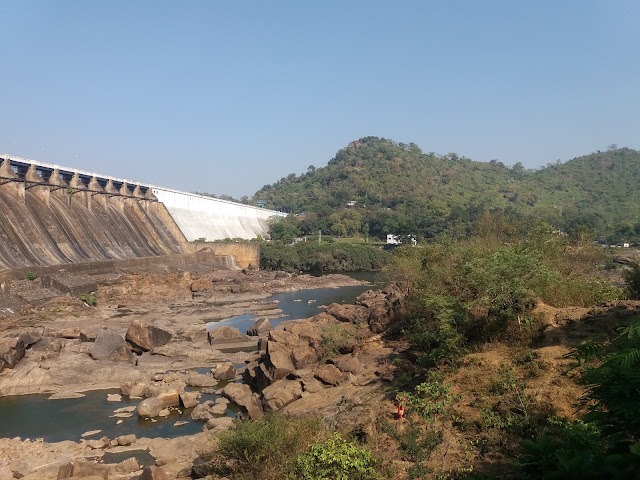Who construct Masanjore Dam and why?
Who construct Masanjore Dam and why?
The Massanjore Dam,
also known as the Canada Dam, is a significant multipurpose dam, located on the
Mayurakshi River in the Dumka district of Jharkhand, India. Main purpose for
Construction of this Dam is regional water for irrigation and electricity needs. Dr. Bidhan Chandra
Roy (former Chief Minister of West Bengal from 1948 until his death in 1962),
a highly respected figure in Indian politics and a prominent physician, played
a significant role in the development and construction of the Massanjore Dam (also
known as the Canada Dam).
He facilitated collaboration between the governments of West Bengal and Bihar (Jharkhand was a part of Bihar until 2000) for the construction of the dam, as the Mayurakshi River flows through both states, but 20% of Irrigation water is given to Jharkhand (Where located this Dam) and 80% of Irrigation Water is used by neighbour state (West Bengal). Electricity produced by this dam through Hydroelectric power plant is also used only West Bengal State. Dr. Roy envisioned the Massanjore Dam as a multipurpose project, emphasizing its role in irrigation, hydroelectricity generation, flood control, and regional development.
History of Masanjore Dam:
·
Construction: The construction of the Massanjore
Dam started in 1953 and was completed in 1955. It was built across the
Mayurakshi River as part of a multipurpose project to cater to various needs
like irrigation, hydroelectricity generation, and flood control.
·
Purpose: The primary purpose of the dam was
to provide water for irrigation to the surrounding agricultural lands and to
generate hydroelectric power for the region. It also aimed to regulate the flow
of the Mayurakshi River to prevent floods downstream.
·
Features and Significance:
1.
Dam Structure: The dam was constructed using materials like concrete, stones,
and other components to create a barrier across the river. The structure was
designed to control the river's flow and facilitate the creation of a
reservoir.
2.
Hydroelectric Power Plant: Alongside the dam,
infrastructure for a hydroelectric power plant was built. This involved
installing turbines and generators to harness the river's flow and generate
electricity. The specific electric-making capacity of the Massanjore Dam's
hydroelectric power station is reported to be around 15 megawatts (MW). This
capacity indicates the maximum amount of electrical power that the dam's
hydroelectric plant can generate under optimal conditions.
3.
Irrigation Infrastructure: Canals, channels,
and irrigation networks were established to distribute water from the reservoir
to nearby agricultural lands, facilitating irrigation for farming. The specific
water storage capacity of the Massanjore Dam's reservoir is reported to be
around 3,430 million cubic feet (97 million cubic meters) when the dam is at
its full capacity. This storage capacity allows for the accumulation of a
significant volume of water, enabling the dam to serve the purposes of
irrigation for agriculture, hydroelectric power generation, and providing water
for other local needs.
Social Impact of Masanjore Dam:
·
The construction of the Massanjore Dam has had a significant impact on
the socio-economic development of the surrounding areas by addressing water
scarcity issues, enabling agricultural growth, and providing electricity to
nearby regions.
·
Additionally, the dam has also faced challenges related to sedimentation
and siltation over the years, which require periodic maintenance and dredging
activities to ensure its efficient functioning.
·
Tourism: Besides its functional purposes, the
dam has become a popular tourist spot due to its scenic beauty. Boating
facilities and other recreational activities attract visitors to the reservoir
area.
·
Local Economy: The dam's presence has contributed
to the local economy by supporting agriculture through irrigation, providing
employment in the hydroelectric power station, and boosting tourism-related
activities
To Construct Masanjore dam, india received support and assistance from
Canada
1.
Technical Assistance: Canada might have provided technical
expertise, engineering knowledge, or financial aid to support India's
infrastructure development, including dam construction projects.
2.
Bilateral Relations: The support could
have been part of bilateral agreements or collaborations between Canada and
India aimed at fostering economic cooperation and development initiatives.
3.
Hydroelectric Expertise: Canada, being a
country with significant expertise in hydroelectric power generation due to its
own hydroelectric projects, might have offered knowledge and guidance for the
dam's hydroelectric power generation aspects.
4.
Humanitarian Aid and Developmental
Goals: The assistance might align with Canada's broader objectives of
supporting global development, poverty alleviation, and infrastructure
enhancement in developing countries.
5.
Shared Values and Goals: Collaboration in
infrastructure projects like dams could strengthen diplomatic ties and
cooperation between the two nations while addressing common developmental
challenges.







.jpg)
No comments